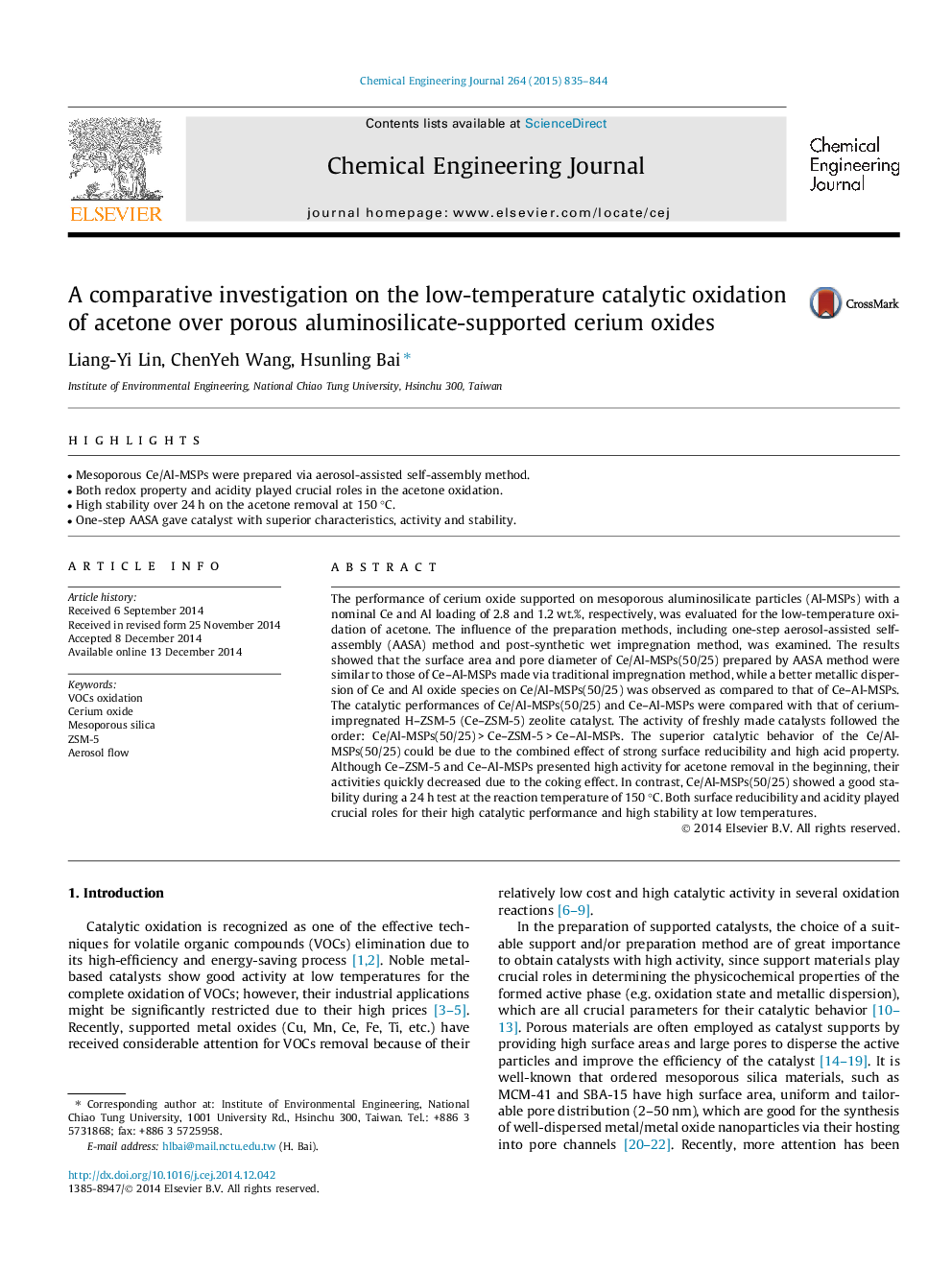| Article ID | Journal | Published Year | Pages | File Type |
|---|---|---|---|---|
| 146878 | Chemical Engineering Journal | 2015 | 10 Pages |
•Mesoporous Ce/Al-MSPs were prepared via aerosol-assisted self-assembly method.•Both redox property and acidity played crucial roles in the acetone oxidation.•High stability over 24 h on the acetone removal at 150 °C.•One-step AASA gave catalyst with superior characteristics, activity and stability.
The performance of cerium oxide supported on mesoporous aluminosilicate particles (Al-MSPs) with a nominal Ce and Al loading of 2.8 and 1.2 wt.%, respectively, was evaluated for the low-temperature oxidation of acetone. The influence of the preparation methods, including one-step aerosol-assisted self-assembly (AASA) method and post-synthetic wet impregnation method, was examined. The results showed that the surface area and pore diameter of Ce/Al-MSPs(50/25) prepared by AASA method were similar to those of Ce–Al-MSPs made via traditional impregnation method, while a better metallic dispersion of Ce and Al oxide species on Ce/Al-MSPs(50/25) was observed as compared to that of Ce–Al-MSPs. The catalytic performances of Ce/Al-MSPs(50/25) and Ce–Al-MSPs were compared with that of cerium-impregnated H–ZSM-5 (Ce–ZSM-5) zeolite catalyst. The activity of freshly made catalysts followed the order: Ce/Al-MSPs(50/25) > Ce–ZSM-5 > Ce–Al-MSPs. The superior catalytic behavior of the Ce/Al-MSPs(50/25) could be due to the combined effect of strong surface reducibility and high acid property. Although Ce–ZSM-5 and Ce–Al-MSPs presented high activity for acetone removal in the beginning, their activities quickly decreased due to the coking effect. In contrast, Ce/Al-MSPs(50/25) showed a good stability during a 24 h test at the reaction temperature of 150 °C. Both surface reducibility and acidity played crucial roles for their high catalytic performance and high stability at low temperatures.
